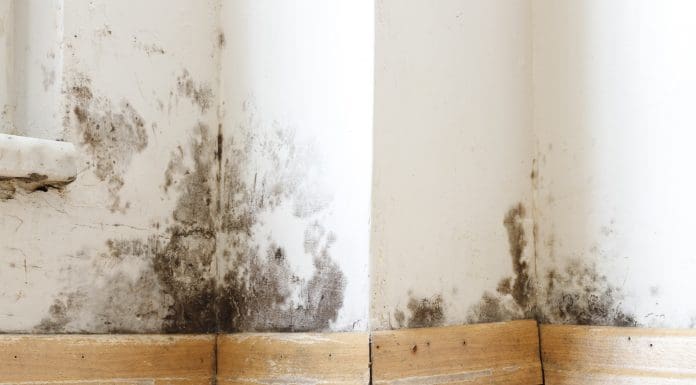Why are condensation, damp and mould still issues, and how do we know if our location is healthy for all?
Here, David Bly, managing director of Cornerstone Management Services Limited, explains the firm’s findings and how their reported transparent outcomes have served to provide cost-effective solutions across the industries they serve.
Cornerstone Management Services Limited is an independent surveying company providing damp and mould-related surveys across the UK for typically Social and Local Authority
housing, NHBC, and private clients.
Here, I explain our firm’s findings and how our reported transparent outcomes have provided cost-effective solutions across our industries.
Our significant number of bespoke surveys to date indicate 91% were healthy dwellings, suggesting the structure was dry and not displaying any clear defects.
However, where defects were noted, their rectifications are prescribed with a defined expected outcome.
The results place a greater emphasis on determining how moisture generation is managed alongside ventilation adequacy with fact-based root causes that remove blame and replace it with peace of mind guidance.
The UK has some of Europe’s oldest housing stock and, consists of a myriad of construction styles, periods, ages and most of all…geographical location and orientation.
Why are healthy dwellings important?
When reviewing properties for their current health in terms of warmth and prevailing structural behaviour when aligning weather conditions with indoor activities, how structural materials behave is also a consideration.
By definition, a Healthy Home should be one that does not experience any defects contributing to its comfortable environment; elements installed to manage the internal
atmosphere should be operational and ‘adequate’ in their delivery.
It is recognised that certain atmospheric management aspects are either broken, isolated or simply too noisy to operate, leading to periods of non-use that, alongside contributory factors including everyday cooking, bathing, washing, etc., can lead to noticeable issues that are not readily understandable.
Cornerstone has witnessed many problems with varying levels of impact. Its goal has always been to investigate what aspects led to creating a credible long-term solution, not a plaster repair.
For example, why is mould in one ceiling area and not others?
In simple terms, if an area of the structure is not at the same temperature as the remaining areas, it can act like a magnet for warm, moist internal air such that, when it comes into contact with the colder surface at certain times of the day condensation can occur being a nutrient for mould spores that will likely be in the atmosphere.
Moisture, mould, and ventilation uncovered
Drying clothes internally can introduce 4.0 – 5.0 litres of moisture into the atmosphere. Mould on contents is indicative of elevated atmospheric conditions and not structural moisture.
Inadequate ventilation can result in prolonged internal pollutants with VOCs (volatile organic compounds) released from everyday activities.
With a host of moisture metering equipment available, the interpretation of recorded readings is essential in determining if, indeed, there is a water-related issue or if the electronic device is being influenced by secondary elements, i.e. foil, backed plasterboard, salts in the structure or if the moisture is on the surface and not in the structure.
Such a process is deemed to be a qualitative aspect whereby the data being registered needs to be confirmed with secondary supporting elements.
Moulds take several days to germinate; therefore, in many cases, onset problems are driven in the main by periodic atmospheric trends that, if left to sustain, can result in visual
evidence on surfaces and items.
With this in mind, there is, therefore, a desire to share more knowledge about the fundamental aspects attributed to dampness, condensation and mould for early interventions and a proactive action plan. But what is the starting point?
Tackling damp and mould: Towards early interventions and a proactive action plan
Cornerstone recognises that introducing IoT electronic sensor devices can provide sought-after early warnings; however, recognising the cause of an ‘alert’ is vital in determining a viable solution and the property condition before their installation.
With guidance wanting to be embraced by a host of clients across all housing sectors, Cornerstone delivers CPD accredited training in all aspects of damp, condensation and mould for administrative staff through to technical personnel.
Plus, to support anyone living, working, surveying, remediating and learning about dampness, condensation and mould for the long-term, our new Property Health App will provide instant 24/7 support measures for simplistic yet effective timely guidance from occupants through to surveying personnel dealing with the submission of viable solutions with better decision making.
The proactive framework enables occupiers to submit evidence of issues for landlords to exact timely responses and further technical aspects for review within their own expert envelope.
Expert guidance for complex issues
Cornerstone remains at hand – when needed – to offer expert guidance for complex issues.
Cornerstone Management Services Ltd
Tel: +443 (0)344 846 0955
*Please note: This is a commercial profile.
The post Damp and mould-related surveys: What is a healthy building? appeared first on Planning, Building & Construction Today.


